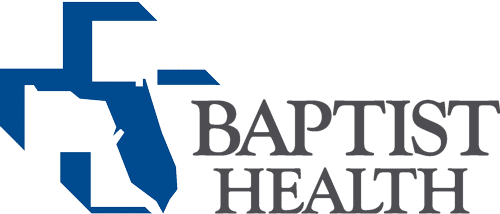Operating Rooms (ORs) are the economic backbone of nearly every healthcare system, and OR utilization is a key metric. It’s a perishable commodity that trades in time, and once time comes and goes, it’s an opportunity forever lost.
Too many times, ORs sit unused, for a variety of reasons, ranging from the early completion of procedures to blocks of time allocated to specific surgeons not being utilized, either fully or at all. Too many instances occur where an OR is blocked, but it sits empty, not being used. Compounding the problem of full utilization is the realization that the smallest unit, or the smallest quantum of time that matters in an OR, isn’t a minute or even a handful of minutes. Rather, it’s the shortest length of time in which a surgeon can do a case.
In this post, we’ll cover five major problems adversely affecting optimal OR utilization, and review the tools and process transformations needed to solve for each. But, first it’s important to start at the beginning and understand the long-established process for scheduling ORs – block scheduling.
Block scheduling and block utilization
For most hospitals and surgery centers, scheduling OR time is typically accomplished through block scheduling, on the often faulty assumption there is consistency in demand with surgeons scheduling cases into the same time blocks week over week. The allocation of these times is typically initiated through a committee and is often influenced by politics, seniority and historical case loads versus expected surgery volume for the upcoming period. As a result, surgeons who have blocked time don’t always have the case demand to fill that time, and other surgeons usually lack the access to backfill those open periods. Eventually, open time is left on the table.
Perioperative leaders often use block utilization as a metric to measure the use of scarce OR resources, and it is calculated as in-block minutes used plus turnover time, divided by the number of block minutes allocated. While it serves its purpose as a rear-view mirror look at utilization, it has many shortcomings as a metric to proactively improve utilization, and it’s the first underlying problem that we’ll examine.
Problem 1: Block utilization is not an actionable metric
Block utilization is an important metric, but it is not a surgeon-centric metric upon which to either make block policy or “right-size” blocks. The following case illustrates just one example why.
Imagine Surgeon 1 as a cataract surgeon whose cases have durations that are relatively consistent and predictable. She takes 10 blocks a quarter and repeatedly fills 7.5 of those blocks, leaving two blocks completely unused – her block utilization is 75 percent.
Conversely, Surgeon 2 is a neurosurgeon whose cases vary widely due to a number of variables, including the patient and the type of procedure being performed. Like Surgeon 1, Surgeon 2 blocks 10 days per quarter, and she consistently uses all 10 days. However, due to the unpredictability in procedure length, she uses, on average, six hours of her eight hour block each day – her overall block utilization is 75 percent.
A perioperative leader might be tempted to take 25% of each surgeon’s block time in order to improve OR utilization, but that would be misusing the metric. In the example above, it might be possible to take the two unused days from Surgeon 1 each quarter without hurting her practice; she would lose zero cases. On the other hand, it’s impossible to take away two days from Surgeon 2 without dramatically impacting her practice; she would lose two cases.
Lastly, if block utilization is what makes a surgeon look like a hero, Surgeon 1 can game the system by releasing two of her blocks in advance, lifting her block utilization to 93.75 percent (7.5 hours divided by 8 hours).
Solution
The real problem to be investigated and solved is identifying what surgeons and service lines are repeatedly leaving gaps of time where new cases can be added.
Software solutions like iQueue for Operating Rooms use machine learning to analyze historical usage of time and recognize patterns to determine the usable chunks of time – termed collectable time – that can be utilized to increase patient access. Block owner by block owner, data is analyzed to determine surgeons and practice lines that regularly leave large blocks of collectable time, identify surgical offices that are not releasing blocks that aren’t going to be utilized, and calculating the amount of collectable time that can be relinquished from the schedule blocks.
Many decisions can be optimized with this data. For example, identifying consistent collectable time at a location on a given day of the week or time of day may indicate that the facility is running too many ORs, further exacerbating shortages in nursing and anesthesia resources.
However, the most potent rationale comes to having hard-and-fast collectable time data to support the difficult conversations with block owners about allocation and usage. The data clearly illustrates block usage, released time, and collectable time.
Focusing on collectable time rather than block utilization helps drive all stakeholders – the facility, its staff, the surgical practices, and the patients – to more desirable outcomes.
Problem 2: Unused time is not accessible to schedule cases
Predicting collectable time can be accomplished, but that, alone, will not prevent the frustrating situations of walking by a blocked, yet unused, OR in the middle of prime time hours. In most institutions, there are no systemic processes to both release time or book new, open time, and the result is an inefficient, and quite ineffective, string of hallway meetings, calls, text, emails, post-it notes and faxes.
Additionally, the organization needs an ability to accurately forecast who might not be able to fill their allocations well, find easy, facilitative ways to get those offices to release block time, and then make that newfound open time, open capacity, readily available to others.
Solution
If cases are not being scheduled into blocks, technology solutions enable push notifications allowing for convenient confirmation as to a surgical office’s block requirements, and prompts the release of unscheduled blocks, whether due to a drop in case volume or a surgeon’s unavailability due to conferences, vacations, clinic hours, etc.
On the demand side, technology applications like iQueue for Operating Rooms allow for the easy inquiry by surgical into open time availability in a digital marketplace environment – collectable time is put into the system and made available for viewing and booking. Plus, solutions enable a “wish list”-like waiting list for blocks of time to come open.
Cloud-based and readily accessible by mobile devices, 21st century technology solutions empower surgeons’ professional lives just as they complement so many areas of their personal lives.
Problem 3: Eco-systems are built on science and medicine, but not always data
Many hospitals and surgical centers have opportunities for improvement with respect to data and driving data-backed decisions powered by state-of-the-art tools, like those using predictive and prescriptive analytics. Data streams are in many places, and a need exists for current, credible, transparent and easily accessed data, all from a “single source of truth” that has the confidence of administrators and practitioners.
In a traditional block allocation environment, utilization reports are lagging metrics, and the unused past capacity of ORs are reported on, but too late to improve upon. At the end of the day, a surgeon’s scheduler doesn’t want to know her cancellation rate was high three months ago, or that the utilization rate was low three months ago. Rather, she requires information that can produce more favorable results next week, next month and next quarter.
Solution
Software tools like iQueue for Operating Rooms use complex mathematics to identify where certain metrics are deviating from a band. If turnover time, cancellation ratios and other key metrics are starting to deviate, push notifications immediately communicate the situation. Data reports are now consultative and prescriptive, rather than descriptive and punitive..
Problem 4: Case volume and case duration are random variables
With respect to optimizing the utilization of ORs, considerations must take into account two stochastic variables – variables with random probability distributions or patterns that can be analyzed, but cannot be precisely predicted. In surgery, those stochastic variables are the volume of cases and the length of each case.
Unfortunately, as reviewed above, most OR scheduling is accomplished by block scheduling, where capacity is allocated on the assumption the block owner is going to be able to use that capacity well. It does not take into consideration seasonality, vacations and conferences, clinics and other reasons a block might not be used.
However, an “open time” alternative process is not a real alternative, as it’s highly inefficient as well. Block scheduling is performed because it works – it allows an ability to balance clinic schedules, add on cases, and plan entire days more effectively and efficiently with staff, equipment and all other necessary resources.
Solution
Many industries, particularly the logistics and delivery industries, use a bin packing methodology to determine the proper allocation of resources. For ORs, analytics software utilizes the historical timestamp data of cases performed by every block owner by service line, and with historical patterns and very precise statistical modelling, perioperative leaders are able to develop sophisticated, forward-looking forecasts, projecting future case volumes by volume and mix of case, and projecting how much time every service line and every block owner will use.
Sophisticated forecasting methods empower perioperative leaders to go within service lines and, based on variations and usage of past blocks, establish a base level of block allocation, and free up the surplus, or service line open time, for the service line owner to properly manage.
Problem 5: Means and medians are not effective at estimating case duration
Determining the length of cases is a fundamentally stochastic process, and while it’s possible to make improvements in estimations, they can never become precise and exact. However, in situations where a case is running late in a given OR on a given day, the ability to predict how long the next case should take allows greater flexibility in decision making, like moving the second procedure into a different room, for instance. Currently, those decisions are typically made in-the-moment, on the ground, but if schedulers had access to actual predictions of how long that second case should take, better utilization will result.
Solution
There are statistical models incorporating more than just the medians of cases complete in the past, including the random forest model, where decision trees are utilized to forecast the length of particular cases based on variables including the patient type and patient characteristics, the CPT code, and much more.
Having a programmatic solution readily available circumvents the need to drain thirty minutes to an hour for decision making in the heat of a moment on a day filled with procedures. In situations where one or more cases are running late, an effective, in-the-moment solution is good for surgeons, staff, anesthetists and patients.
Moving forward
Operating Room resources are precious, scarce resources, and they have been from their very origin. However, perioperative leaders and managers now have 21st century tools in which to manage those resources for optimal utilization.
New metrics, like collectable time, have multiple dimensions to them and help administrations optimize ORs and unlock additional economic value whether it is through increasing volume during primetime hours or providing insight into the need to close unnecessary ORs and/or staff accordingly.
Administrators, schedulers and surgical offices need to look beyond dashboards and descriptive analytics, and move toward utilizing predictive analytics, and integrate them into a health system’s core processes. Doing so empowers an ability to move beyond the numbers and into creating strategies and tactics to positively impact the numbers.
For more information and greater detail on how to maximize the utilization of your OR resources, watch the recorded webinar on demand, “How to Get The Most Out of Your Existing OR Capacity,” presented by Sanjeev Agrawal.





